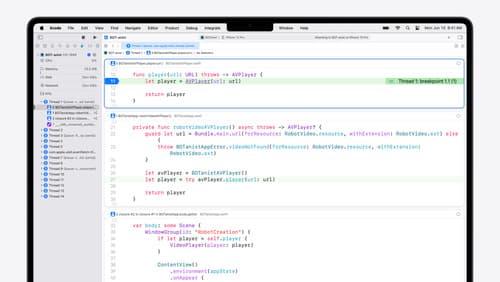Hang
Asked on 2025-06-19
1 search
It seems like you're interested in understanding how to handle hangs in applications, particularly in the context of Swift concurrency. At WWDC, Apple presented several sessions that address this topic, focusing on how to use Swift concurrency to improve app performance and responsiveness.
One relevant session is "Code-along: Elevate an app with Swift concurrency" (wwdc2025-270). This session discusses how to move expensive image processing tasks off the main thread to prevent UI hangs. By using Swift concurrency features like async and await, developers can ensure that the main thread remains responsive, even when performing complex operations in the background. You can learn more about this in the chapter on "Running tasks on a background thread" starting at 12:30.
Another session, "Embracing Swift concurrency" (wwdc2025-268), explains how asynchronous tasks can prevent UI freezes by allowing network requests and other long-running operations to run without blocking the main thread. This session provides insights into using concurrency to keep apps responsive, which is crucial for a smooth user experience. The chapter on "Asynchronous tasks" starts at 06:00.
If you're interested in learning more about analyzing and fixing performance issues, the session "Optimize SwiftUI performance with Instruments" (wwdc2025-306) might be helpful. It covers how to use Instruments to diagnose and fix performance bottlenecks in SwiftUI applications.
These sessions provide valuable insights into using Swift concurrency to handle hangs and improve app performance.

Code-along: Elevate an app with Swift concurrency
Learn how to optimize your app’s user experience with Swift concurrency as we update an existing sample app. We’ll start with a main-actor app, then gradually introduce asynchronous code as we need to. We’ll use tasks to optimize code running on the main actor, and discover how to parallelize code by offloading work to the background. We’ll explore what data-race safety provides, and work through interpreting and fixing data-race safety errors. Finally, we’ll show how you can make the most out of structured concurrency in the context of an app.

Embracing Swift concurrency
Join us to learn the core Swift concurrency concepts. Concurrency helps you improve app responsiveness and performance, and Swift is designed to make asynchronous and concurrent code easier to write correctly. We’ll cover the steps you need to take an app through from single-threaded to concurrent. We’ll also help you determine how and when to make the best use of Swift concurrency features – whether it’s making your code more asynchronous, moving it to the background, or sharing data across concurrent tasks.

What’s new in Xcode 16
Discover the latest productivity and performance improvements in Xcode 16. Learn about enhancements to code completion, diagnostics, and Xcode Previews. Find out more about updates in builds and explore improvements in debugging and Instruments.
